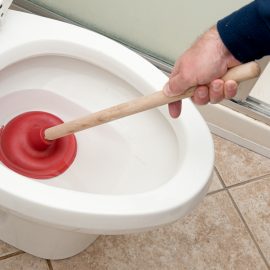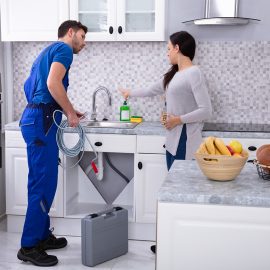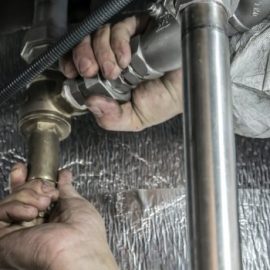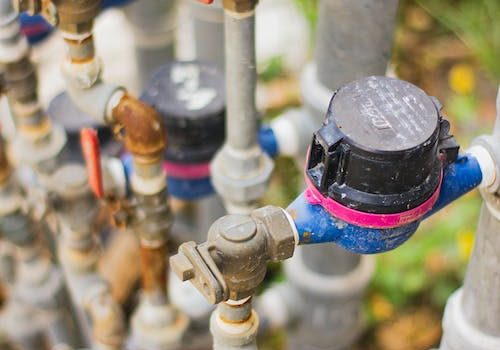
What Is a Solenoid Valve in a Heating System?
Contents
Solenoid shut-off valves: simple motorized valves
Zone solenoid valves: to supply or isolate a secondary network
Mixing solenoid valves: to distribute the heat transfer fluid or adjust its temperature
The heating solenoid valve (or motorized valve) is a valve operated by an electric motor. All valves (diaphragm, seat, piston, ball, metal, synthetic, etc.) can be motorized. In this post, you will learn how solenoid cut-off valves, solenoid zone valves, and solenoid mixing valves are used in water heating.
Solenoid shut-off valves: simple motorized valves
Still called a “2-way solenoid valve” (for the number of connections), it is an “all or nothing” valve: it is open or closed. It is used to supply or isolate a hydraulic loop, establish a fuel or gas circuit, restoring pressure, or drain a pipe. It is generally useful whenever a circuit must be opened or closed remotely.
There are two types of 2-way valves. Normally open, they let the fluid through in the absence of electrical voltage and close when voltage is applied. Normally closed, they cut off fluid flow in the absence of electrical power and open under voltage.
Zone Solenoid Valves: Supply or isolate a secondary system
The zone solenoid valve has 2 or 3 channels and can be of the “on/off” or “progressive opening” type. It allows to put in (or out) service, on-demand, a part of a heating circuit, without harming the good functioning of the rest of the installation. It allows you to cut off or restore the power supply to an unused living space or to substitute one heating method for another.
For example, in a mixed system, the zone solenoid valve can cut off the radiator circuit when the solar panels power the underfloor heating. This operation can be controlled manually or automated using a central control unit.
Mixing solenoid valve: distribute the heat transfer fluid or adjust its temperature
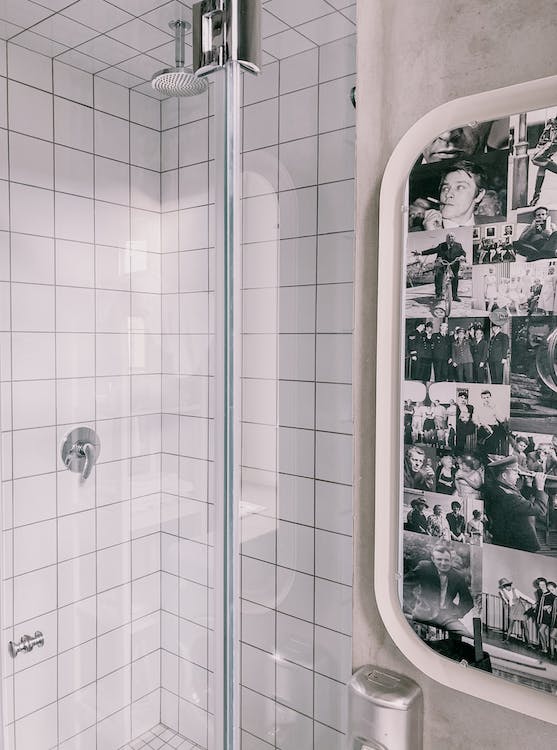
Mixing solenoid valves have 3 or 4 connections (ways).
3-way solenoid valves
In 3-way solenoid valves, a central control unit controls the actuator, which adjusts the opening according to the heating requirements. There are 2 operating modes:
In mixing mode, the boiler flow water can be combined with water from the return circuit of the heat emitters (radiators, unit heaters, underfloor heating, domestic hot water tank, etc.). When the valve is 100% open, the temperature of the water injected into the loop is equal to the boiler outlet temperature. Closed at 100%, the T° of the loop is equal to the return T° of the radiators. All the T° nuances are possible between these 2 extremes.
In this configuration, the valve and the circulation pump are installed on the flow circuit between the generator and the heat emitters. The flow rate of the heating loop remains constant.
In bypass (or discharge) mode, the valve divides the flow of the heat transfer fluid between the return to the boiler (primary circuit) and the heating loop (secondary circuit).
In this configuration, the valve is either on the flow or the return, and the gas pedal is on the primary circuit. Whatever the degree of opening of the valve, the temperature remains constant. Only the flow rate in the loop varies (no circulation when the valve is closed).
4-way solenoid valves
Similar to the 3-way valves, the 4-way solenoid valves differ from them by 2 essential functions. Whatever the opening status (open, closed, or in regulation), the temperature is regulated on each circuit (primary and secondary). Finally, the flow rate of each loop remains constant.
These features eliminate the risk of dew point formation, which can destroy a steel boiler in just a few months, and eliminate thermal shock, which is responsible for the risk of cracking cast iron boiler bodies. They also help to save energy by increasing the precision of the control system.
By reading this piece, you now better understand how solenoid mixing valves, solenoid zone valves, and solenoid cut-off valves are utilized in water heating. Do not forget to leave your comments below.

